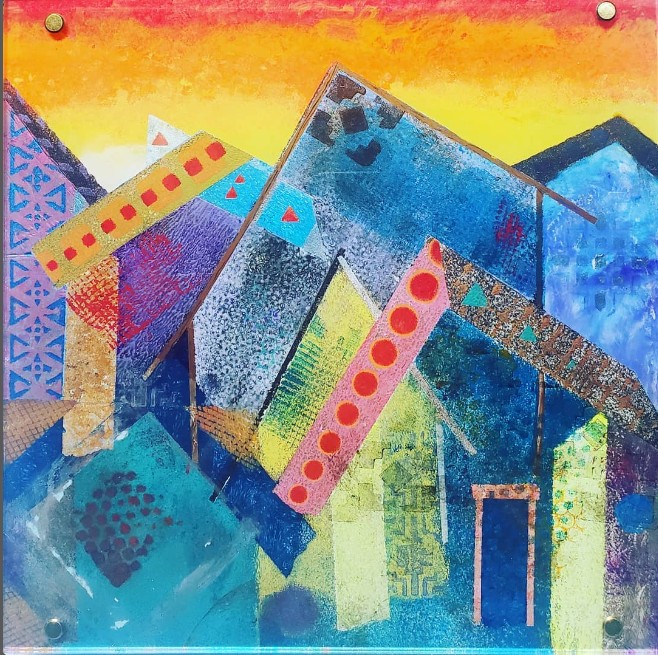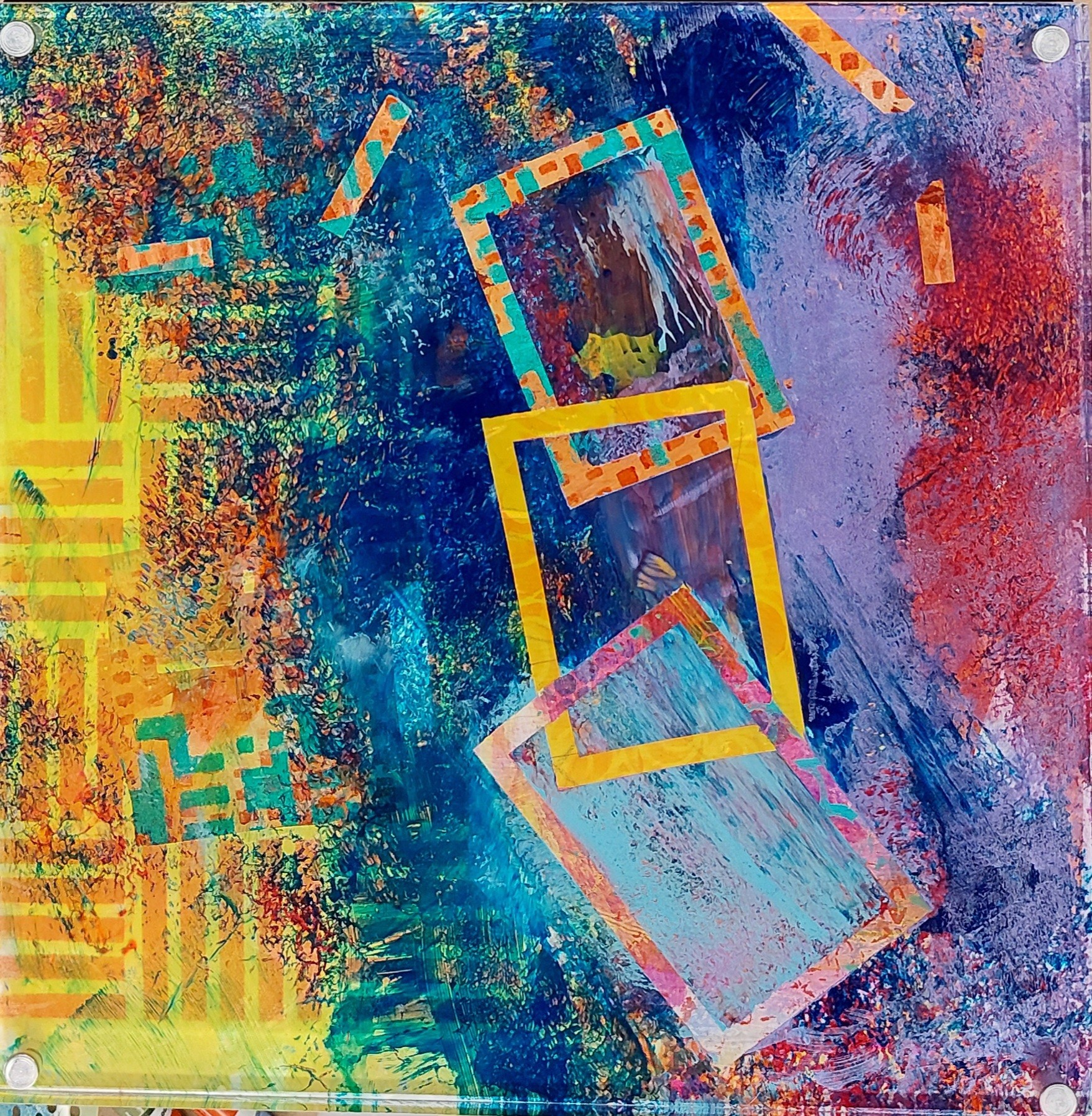
We recently connected with Curtis Haynes and have shared our conversation below.
Alright, Curtis thanks for taking the time to share your stories and insights with us today. Are you happy as a creative professional? Do you sometimes wonder what it would be like to work for someone else?
To answer these questions I can turn them around. I don’t wonder what it would be like to have a regular job, I know.
I wonder what it would be like to work full-time as an artist. That day may be soon approaching as I near retirement from a job I’ve had for the last thirty-seven years, and counting. I was told after I retired I could come back two or three days a week if I wanted. But creating art sometimes feels like a part-time job as I prepare for exhibitions.
I’ve had very positive experiences the last few years with galleries, and art exhibits and sold several paintings last year. Plus, I’ve made some very good artist friends along the way. And I have a few more exhibits on the calendar for this year and one or two already scheduled for next year.
As always, we appreciate you sharing your insights and we’ve got a few more questions for you, but before we get to all of that can you take a minute to introduce yourself and give our readers some of your back background and context?
I blame, I meant to say thank my wife for getting me started as an artist. In 2010 my wife was a teacher and that summer she enrolled in an art class. She called me at work to inform me the class would be canceled unless more people signed up; So she signed me up. Not willing and looking for any reason not to go I replied I don’t want to take an art class, I can’t even draw a straight line. Her response was but it’s an abstract class, you don’t have to draw a straight line. So I agreed and here we are.
After the Army, the only drawing classes I had were geometry and technical drawing of machine parts and automotive components during my apprenticeship in a truck factory in Germany. I was only an average student but was very interested in those topics.
As a new art student, I struggled with color blending and seemed to be an expert at making the color of mud, which was never my intention. Thankfully the instructor (James “Jim” Gross) was very patient with me. I’d say the first couple of years of creating art were not the easiest for me. It was a big learning curve having been a mechanic most of my life. I discovered creating art was therapeutic in a way that took my mind off things. It’s like reading a good book or watching a good movie, you just forget about life for a while.
We decided to continue our art education together and took art classes under the guidance of Wilfred Fathi for ten years. Having been in so many classes, class time became our studio time. Wil allowed us to work on our projects but was always ready to answer any questions or provide expert advice.
Our summer vacations almost every year since 2010/11 have been traveling to other states taking art workshops, and exploring art galleries. Some of the artists we learned from include Ardith Goodwin and we’ve spent many hours with Sandra Duran Wilson. I wish I could name everyone we’ve taken lessons from, not only well-renowned artists but artist friends as well. One advantage is being advised by artist friends such as Sharon Allred, Julie Rippy, Skyler Lovelace, and others.
During a visit to Santa Fe, New Mexico, I fell in love with reverse painting on acrylic panels. Especially that of Doyle Reno. I mentioned this to Sandra who promised if I returned I could learn about painting on acrylic in reverse, which I did.
I’m someone who refuses to follow the crowd and must be different. For example, in the British Car Club, I drove my Italian car (a Fiat 124 Spider). My art has to be different as well. I challenged myself to experiment, and try new things.
Finding it difficult to keep the viewing side of the acrylic panel free from paint I decided to paint in reverse without removing the protective covering from the viewing side. When the painting is finished or nearly finshied then I remove the covering and view the results. On my Instagram page are some videos of this.
Creating this way I have to imagine what is happening, how the next color will affect the previous color, left is right, text has to be backward, etc. I start with details and work toward the underpainting (“reverse”). Once the paint is applied it can be very difficult to change the painting, unlike painting on canvas where I could paint over it.
My first few acrylic panels I put into frames that I made. The issue was I put a lot of time into sanding and polishing the edges to make them clear. Cutting acrylic on a table saw leaves a very rough and opaque edge (and it is very messy). Framing the artwork hid the polished edges.
In a customer’s lobby, I noticed a collection of awards on the walls mounted with sign hardware. This was my Eureka moment. Since then my artwork is usually mounted this way. Sometimes I mount it on a metal backing that I cut with a handheld grinder.
Some interesting things happen. For one, all polished edges are exposed. If I polish the metal and make the painting a bit translucent, the reverse side of the painting reflects off the metal. What is seen in the reflection may not always be seen from the front.
What intrigues me the most is how lighting and viewing angles change what I see. Metallics, color shifts, etc. appear. I always see something different every time I look at one of my paintings. It’s always interesting to hear what a viewer sees and the best surprises happen when someone shines a light across my paintings. Photos never capture the special effects.
Although I would like to explore other art forms such as stone carving (thanks for the lesson, Wil), metal art, and sculpture, I plan to continue experimenting and challenging myself to create intriguing works of art on acrylic.



Let’s talk about resilience next – do you have a story you can share with us?
In my career as a mechanic I am faced every day with challenges, some can be very technical. I can’t give up and walk away, I have to find a solution. Painting in reverse, especially when I choose to not remove the protective covering from the viewing side forces me to think outside the box. I have to stick with it no matter the challenge as I know the outcome will be worth the time and effort.


What’s the most rewarding aspect of being a creative in your experience?
The most rewarding aspect for me as an artist is the friendships made in this journey, the networking, and discovering the art world is very large with much more to discover.



Contact Info:
- Website: Under construction
- Instagram: https://l.facebook.com/l.php?u=https%3A%2F%2Fwww.instagram.com%2Fcurtis.haynes.artist%2F%3Ffbclid%3DIwAR20QZr4edLykX3qEc0v_HHb86E0clnpAavl32pZqXtVKx8uSJw9qPdA0o0&h=AT1LooU9v1CAj0M54cpAanYQ1fpVjviT_6wjQfUREsOTntlISIWLbXsuZQO27lYtM-tzIE_lsonx_uGFLRg-PABjz_7uw7ASbGim2Tdsl2Q3NNMjVjwXuvyWaEbgxC-w_WzxEiP3g-TBEGp1SFFyOg
- Facebook: https://facebook.com/ArtbyCurtisRHaynes/
- Linkedin: Curtis Haynes, Training and Development Manager
Image Credits
Image credits Curtis Haynes and Barbara Webster-Haynes

